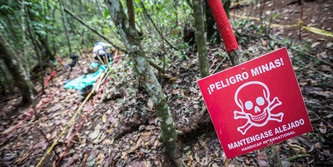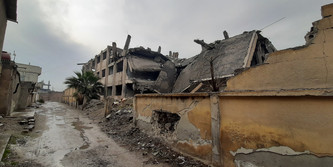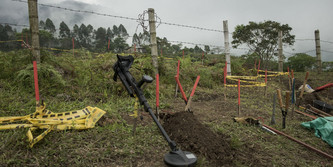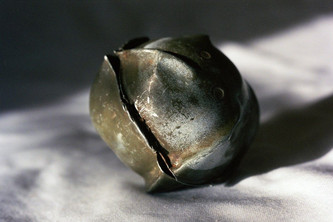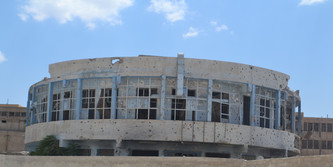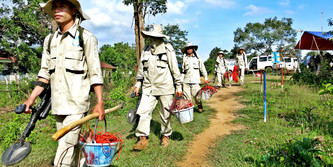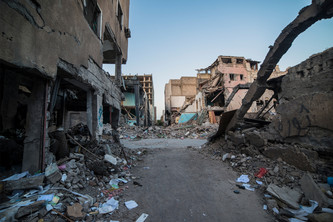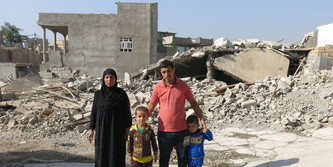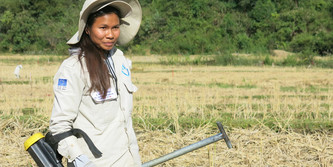Afghanistan: Bus drivers join effort to prevent mine accidents
After crisscrossing Afghanistan for years, many drivers have direct experience with mines. They know the danger posed to their passengers' lives as well as their own.
One of them, Mirwais, has been driving a bus for the past 25 years.
This was the first time he had attended such a presentation, but he already had tragic personal knowledge of the mine danger. "Some years ago I was driving behind a bus that tried to pass the vehicle in front by going off the road onto the shoulder," he recalled. "It hit a mine and exploded, killing all 13 passengers. It was a really frightening experience. Since then, I have never driven on the shoulder."
The number of mine accidents on roads has been increasing in recent years, especially since there is better access to former conflict areas and a general increase in traffic. Records regularly collected from some 500 health-care facilities across the country by the ICRC and the Afghan Red Crescent Society show that there were 198 victims of anti-vehicle mines between 1998 and 2001.This number grew to 351 between 2002 and June of this year, which is why the ICRC has started mine-risk education for bus drivers.
"Our aim is to promote safe behaviour regarding mines and other explosive remnants of war,familiarizing the drivers with dangerous situations," said Zamanuddin Noori, who runs the programme in Kabul.
Drivers can also help by spreading awareness throughout the country, as Hafizully, a 63-year-old driver from Maidan, explained. "These pointersare useful not only for us driving down the road, but also at home and in the towns and villages we go through, where many people still live with mines and other munitions around their homes."
Since November 2004, over 2,600 drivers have attended 160 presentations in nine provinces around the country. By sharing their knowledge about the risks of mines, all of these drivers can help reduce accidents in the future.
According to figures from the UN's Mine Centre for Afghanistan, landmines and other explosive remnants of war pose a danger for an estimated 6.2 million Afghans living in high-risk areas or planning to return there. Twenty-five years of mine-laying in Afghanistan have killed or maimed an estimated 100,000 people. This deadly legacy of war continues to claim two to three persons every day.

